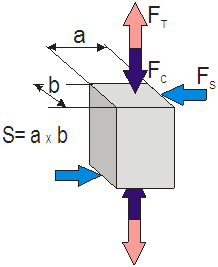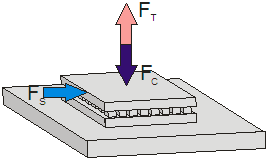Application Tips
Thermoelectric cooler (TEC) is a semiconductor device which is characterized by unique heat pump performance with high efficiency, compactness and durability. The unique ability of TECs to heat and cool, permits them to lower temperature of an object below ambient as well as to stabilize temperature of objects in widely varying ambient conditions.
Here we mention some application tips that can help in optimal use of TECs.
Mounting
Power Supply
Environment
Handling
Heat Dissipation
Reference Data
Brief Summary
MECHANICAL LOADS
-

-
In TEC construction the most delicate parts - thermoelectric pellets made from Bi2Te3 semiconductors. The thermoelectric material has limited mechanical properties. So estimations of maximal mechanical loads to TECs are based on strength of thermoelectric material - TE pellets in a TEC.
RMT recommends the following maximal figures for mechanical loads:
Admissible static loads to TE material, max Per mm2 of cross-section N/mm2 Tension Force 5 Compression Force 5 Shear Force 2
While a thermoelectric material is quite strong in both tension and compression, it tends to be relatively weak in shear.
Estimations of Maximal Mechanical Loads
With use of the figures it is possible to calculate static mechanical loads to particular TEC types by calculation of total cross-section of all TE pellets of TECs.
Note. It does not mean a size of TEC cold of hot sizes, but only sum of pellet cross-sections.
Examples
-

-
Parameter Units Example1 Example2 TEC type — 1MC06-070-10 1MC04-030-05 Cold side mm 12.0x12.0 6,4x6,4 Hot side mm 12.0x12.0 6,4x6,4 Number of pellets — 140 60 Pellet cross-section mm2 0.6x0.6 0.4x0.4 Sum of pellets mm2 50.4 9.6 Total Forces Tension N 252 48 Compression N 252 48 Shear N 100 19
Note: If mechanical mounting is applied, maximal compression force must be divided by number of screw to estimate torsion per screw.


